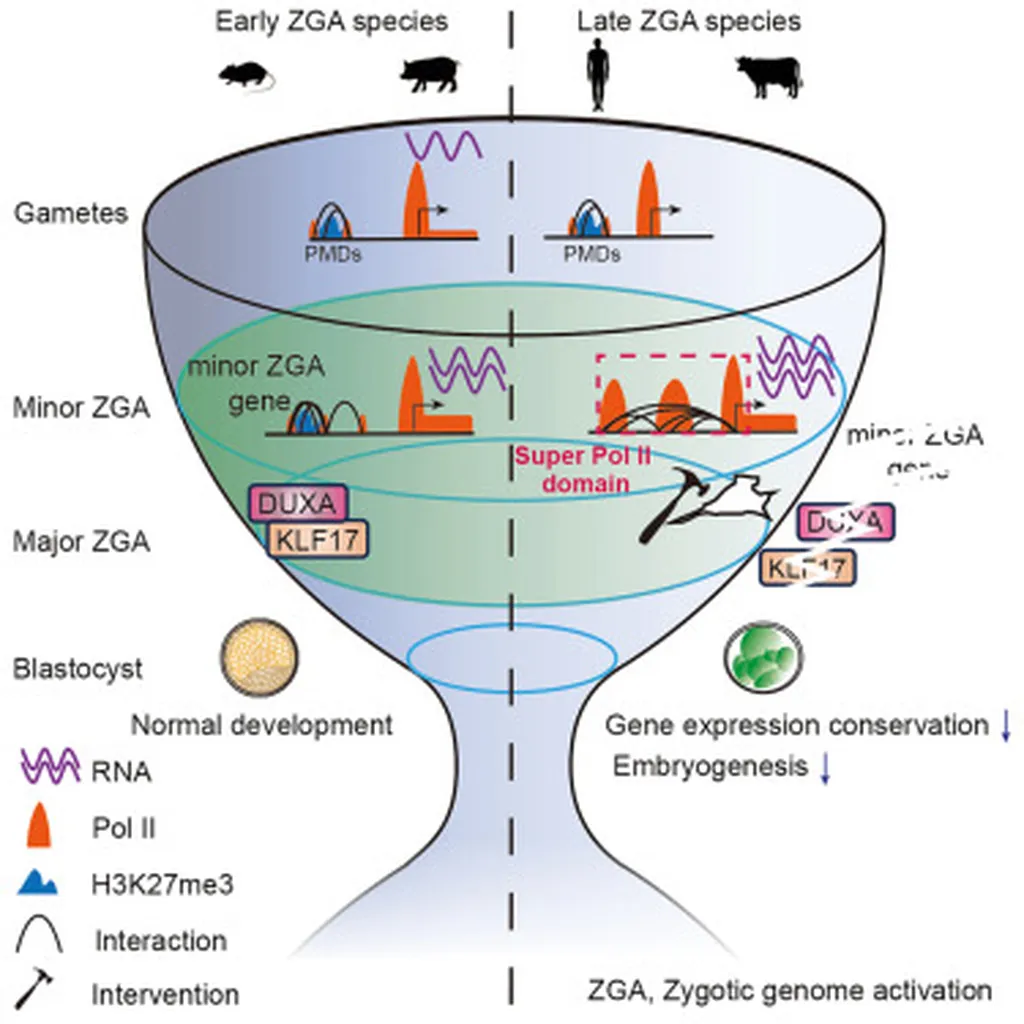In a groundbreaking study published in *Cell Genomics*, researchers have uncovered a novel mechanism that regulates the timing of zygotic genome activation (ZGA) in mammals, with significant implications for agriculture and reproductive technologies. The findings, led by Jingcheng Zhang from the Key Laboratory of Animal Biotechnology of the Ministry of Agriculture at Northwest A&F University, shed light on how RNA polymerase II (RNA Pol II) orchestrates gene expression during early embryonic development.
ZGA is a critical process where the embryo’s genome takes over control from the maternal genome, initiating the transcription of essential genes. This process occurs at different stages across species: mice activate their genome at the 2-cell stage, while bovines and humans do so later, between the 4- and 8-cell stages. The study reveals that in bovine embryos, RNA Pol II forms strong intergenic clusters, dubbed “super RNA Pol II domains” (SPDs), which enhance the expression of minor ZGA genes through chromatin interactions.
“These SPDs are a fascinating adaptation in bovine embryos,” explained Zhang. “They boost the expression of minor ZGA genes to levels comparable to those seen in early-ZGA species, ensuring the integrity of major transcriptional waves during late-ZGA.”
The researchers demonstrated that perturbing SPDs using CRISPR interference (CRISPRi) in bovine embryos decreased the expression of minor ZGA genes. Moreover, knocking down these genes disrupted major ZGA and embryogenesis, highlighting their crucial role. Interestingly, the study found that human embryos also exhibit a rapid enhancement of minor ZGA genes, suggesting a conserved mechanism across species.
In contrast, mouse and porcine oocytes precociously express these minor ZGA genes without the formation of SPDs, indicating species-specific regulatory mechanisms. This discovery could have profound implications for agricultural practices, particularly in livestock breeding and reproductive technologies.
“Understanding the timing and regulation of ZGA is pivotal for improving embryo viability and success rates in assisted reproductive technologies,” said Zhang. “This research provides a foundation for developing targeted interventions that could enhance embryo development and productivity in livestock.”
The findings also open new avenues for studying the evolutionary adaptations of ZGA timing across different species. By elucidating the role of SPDs, researchers can explore how these mechanisms contribute to species-specific developmental strategies and potentially apply this knowledge to improve agricultural outcomes.
As the agricultural sector continues to seek innovative solutions to enhance productivity and sustainability, this research offers a promising direction for advancing reproductive biotechnologies. The insights gained from this study could lead to the development of novel tools and techniques that optimize embryo development, ultimately benefiting farmers and the broader agricultural industry.
In summary, the discovery of super RNA Pol II domains represents a significant advancement in our understanding of ZGA regulation. By unraveling the intricate mechanisms that govern early embryonic development, researchers are paving the way for future innovations in agriculture and reproductive technologies.

